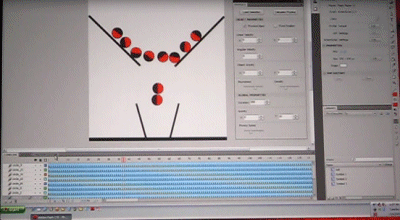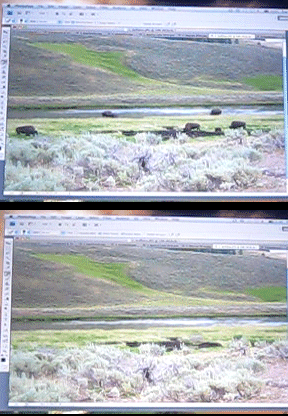I was looking for a list of the Sneak Peeks shown at last week’s Adobe MAX conference in Los Angeles. I couldn’t find one quickly, so here is mine. Note that these are billed as experimental features that may never ship.
Thin client gaming: this is a kind of application virtualisation. We saw a 3D game that was rendered on the server, and streamed as video to a variety of clients. The clients send keystrokes back to the server enabling the users to control the game. Processing graphics on the server could enable effects that would otherwise require a more powerful graphics processor than would typically be available on a small device, as well as reducing the local install footprint to near zero.
Physics engine in Flash: Very interesting demo showing how you might apply physics effects to objects in the Flash designer. Instead of tracing an animation path, you set parameters that say in effect “behave as if dropped” or “behave as if thrown”. Great for games; if you wanted to code a pinball machine (as shown in the demo), for example, this would save a lot of mathematics.

Smart Paste: a cool demo showing how you might be able to paste content from vector graphics designers (like Adobe Illustrator) into an HTML web page, using the HTML 5 Canvas element and preserving scalability. The intermediate format is FXG, an XML format for Flash Platform graphics interchange. We were shown how the vector graphics could be bound to data from Excel to create a chart. The best bit was when we saw a Flash animation exported to JavaScript and HTML using this technique. Flash export to HTML from Adobe?
Flex mobile framework: Ely Greenfield showed a demo of Slider, a version of the Flex SDK optimised for mobile devices. Despite this being a Sneak Peek, there’s little doubt that this will ship.
Project ROME: an AIR application (20,000 lines of code) for graphic design, with a context-sensitive designer, text flow between containers, the ability to import Photoshop art, video embedding, and output including SWF, PDF, JPG, SVG. ROME also runs in the browser as a web application. This is interesting if you envisage a time when applications now part of Creative Suite could be implemented as web apps. See this on YouTube.
Developer cloud: Develop client and server parts of an application in an integrated manner and with the same programming language, with smooth debugging between the two. Demo of server-side ActionScript. Microsoft platform developers already enjoy something like this with C# or VB.NET in combined Silverlight and ASP.NET projects in Visual Studio 2008.
Fireworks hierarchical undo: This demo didn’t actually work, but it is a great idea. The problem with Undo is that it is linear. Therefore, if you do some bad work, and then some good work, you have to undo the good to undo the bad (if you see what I mean). This feature would let you undo selectively instead.
Pause and resume development: Also known as Edit and Continue, this lets you make changes to Flex code while paused during a debug session. Another one Microsoft developers already enjoy.
Photoshop intelligent hole-filling: this one got loud whoops of applause. The idea is that you take an image which includes an unwanted object – like a pretty view spoilt by an electricity pylon – select the object and ask for it to disappear, intelligently replaced by parts of the rest of the image. The demo worked fairly well; the image below shows how a group of water buffalo were disappeared from a photo. Now you will trust digital images even less.

That’s it; if I’ve missed something, let me know!
Hi Tim,
Definately some interesting things there. Do you think it is time again to draw a comparison with Silverlight’s future plans and these? Would be good to see how you positioned them against each other…
Cheers
Ian
@Ian I am doing that constantly. I’m guessing that there will be some Silverlight news at PDC next month.
Tim
I want to see some native support for gesture recognition like this
http://www.idontplaydarts.com/code/brain-training/